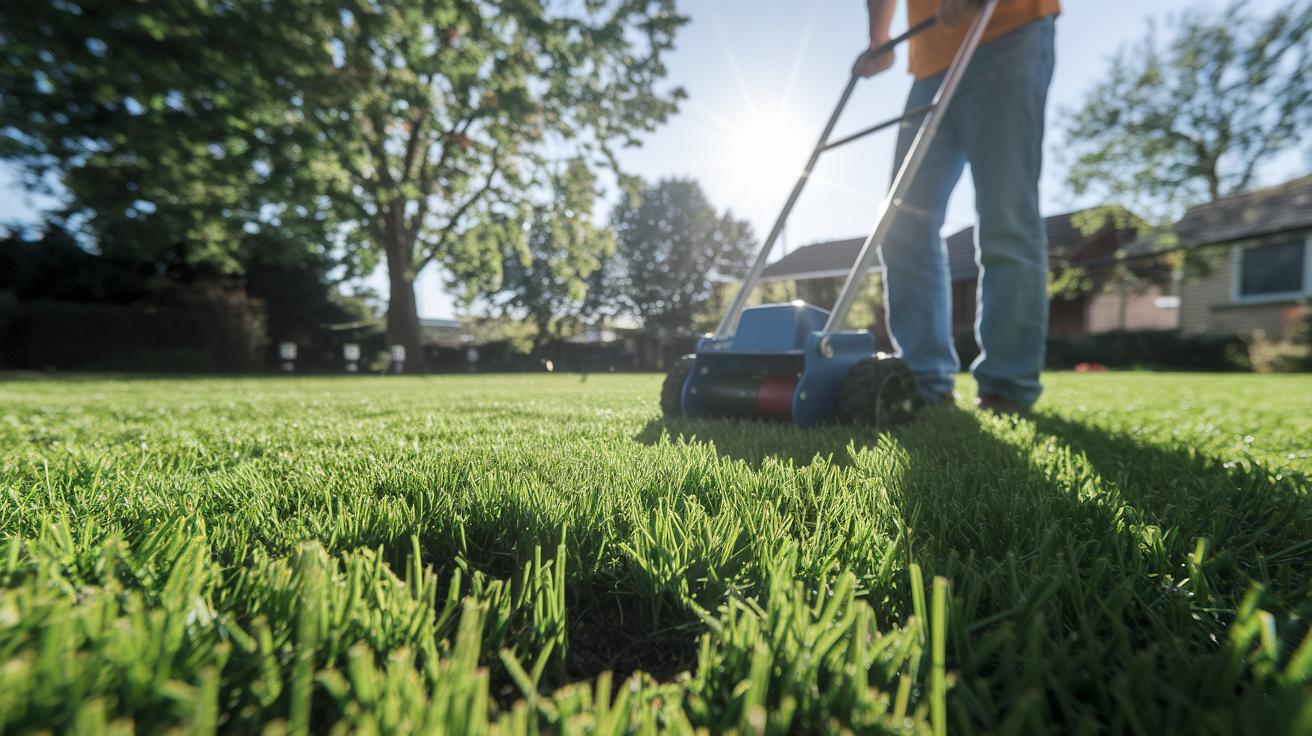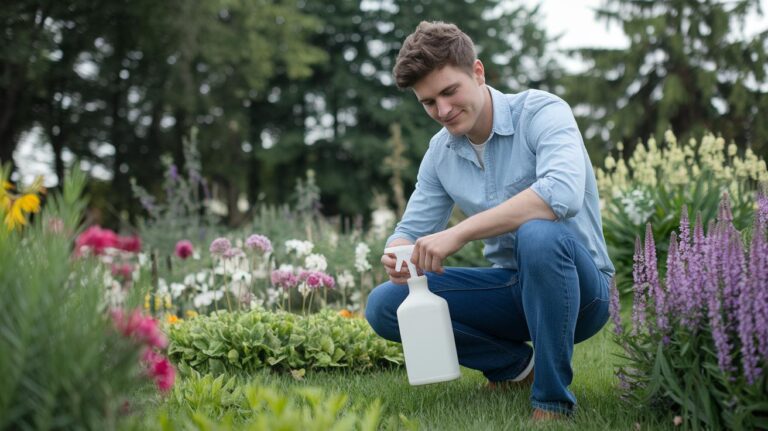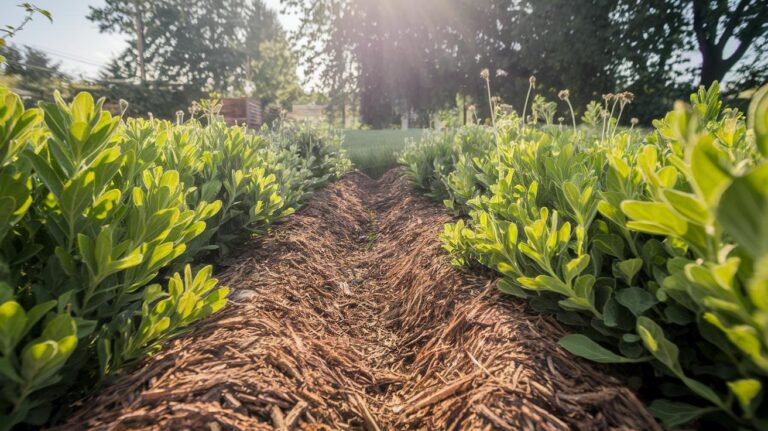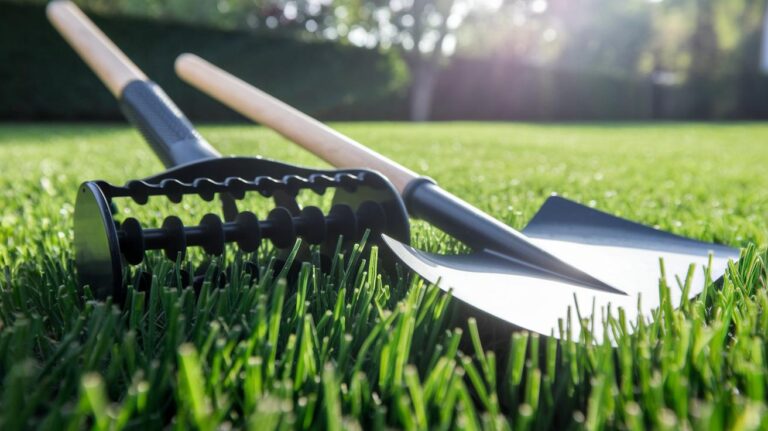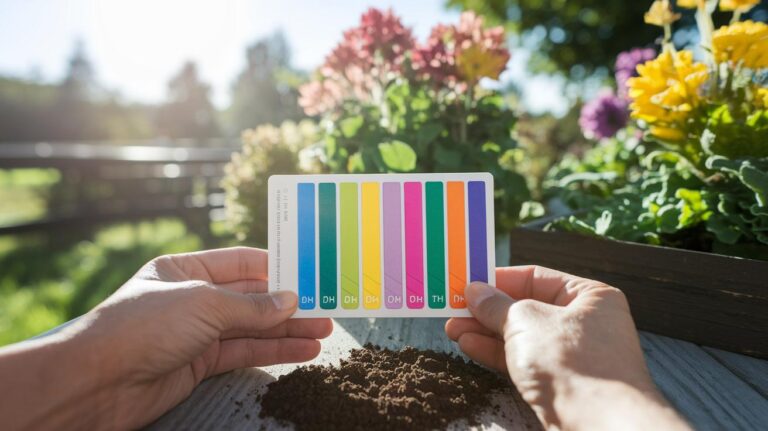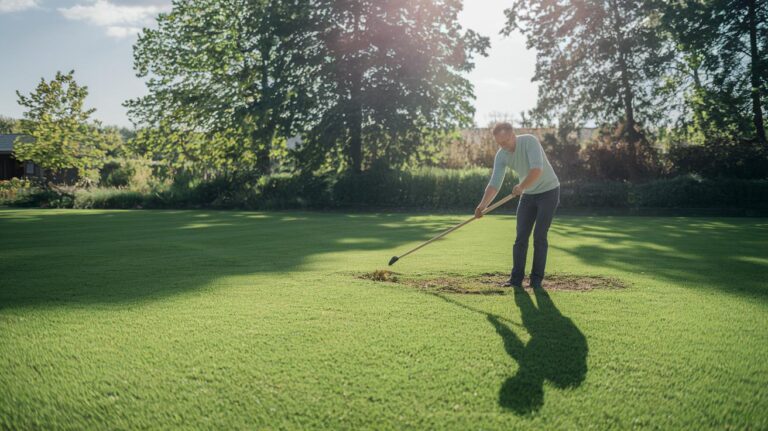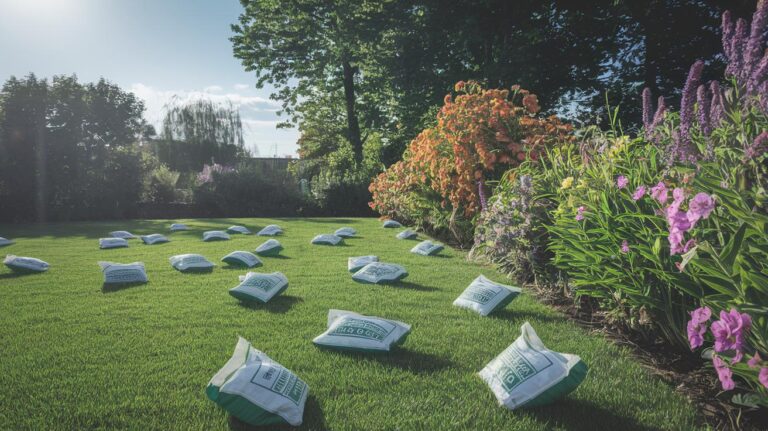What Is Lawn Aeration Boosts Turf Health Quickly
Have you ever watched puddles collect on your lawn after a rain, while your grass stays sad and thin? That’s a sure sign the soil below is packed tight (compacted soil, or soil squeezed so air and water can’t slip in).
Aeration is the simple trick to fix it. You use a core aerator (a tool that, you know, pulls out small soil plugs) to poke tiny holes so air, water, and nutrients dive straight to the roots.
Think of your soil like a sponge: after aeration it soaks up water nicely without turning into a muddy mess. Plus, the warm earth crumbles between your fingers in a satisfying way.
Before you know it, you’ll see thick green blades, a deeper color, and a springy bounce with every step. Wow.
Ready to give your lawn a breath of fresh air? Grab that aerator and let’s get to work.
What Is Lawn Aeration Boosts Turf Health Quickly
What is lawn aeration? It’s poking tiny holes in your grass so air, water, and nutrients slip down to the roots. Have you ever seen water just sit on top of your lawn? That’s soil so packed it won’t soak up a drop.
Soil gets pressed tight by heavy foot traffic, pets chasing balls, pounding rain, and stubborn clay soil that feels hard as bricks when dry. It’s like a sponge you can’t squeeze. And when the ground’s that compacted, roots can’t breathe or drink.
Core aeration explained: a hollow-tine machine pulls out soil plugs about 2 to 4 inches deep and leaves holes every few inches. You can also use spike or slice tools that push or slit the soil without lifting plugs. Oops, I once dropped a plug on my patio, no harm done. Those openings give roots room to stretch, drink, and gulp down good stuff in the soil.
After aerating, a good deep watering or a dusting of compost (decayed organic matter that enriches soil) slips straight to the root zone. Your grass will drink it right up. And soon you’ll notice thicker blades and a richer, deeper green.
Reasons to Aerate Your Lawn
Ever stepped on your lawn and thought you were walking on concrete? That’s soil compaction (when heavy pressure squeezes dirt so tight air, water, and nutrients can’t move through). Your grass roots end up gasping for breath.
Aerating (making little holes in the soil) brings that air and water back where they belong. It’s like taking a deep breath after being stuck in a stuffy room.
You’ll spot these signs when your lawn needs a little help:
- Ground feels spongy or rock-hard
- Grass looks thin or patchy
- Puddles form after rain
- New sod laid over dense soil
- High-traffic spots from kids or pets
- Recent digging or heavy work
Ignore those clues and you’ll face troubles. Water will just sit or run off, pulling fertilizer away before roots can grab it. Shallow roots turn grass weak and tired, making it easy prey for disease or drought. Soil can wash away too, carrying precious topsoil down the drain.
By the way, I once ignored a tiny puddle and ended up with a muddy mess! Oops, I meant fewer puddles after aerating. Grab your aerator or rent one this weekend and give your lawn the deep drink it’s been craving, right?
Key Benefits of Lawn Aeration for Turf
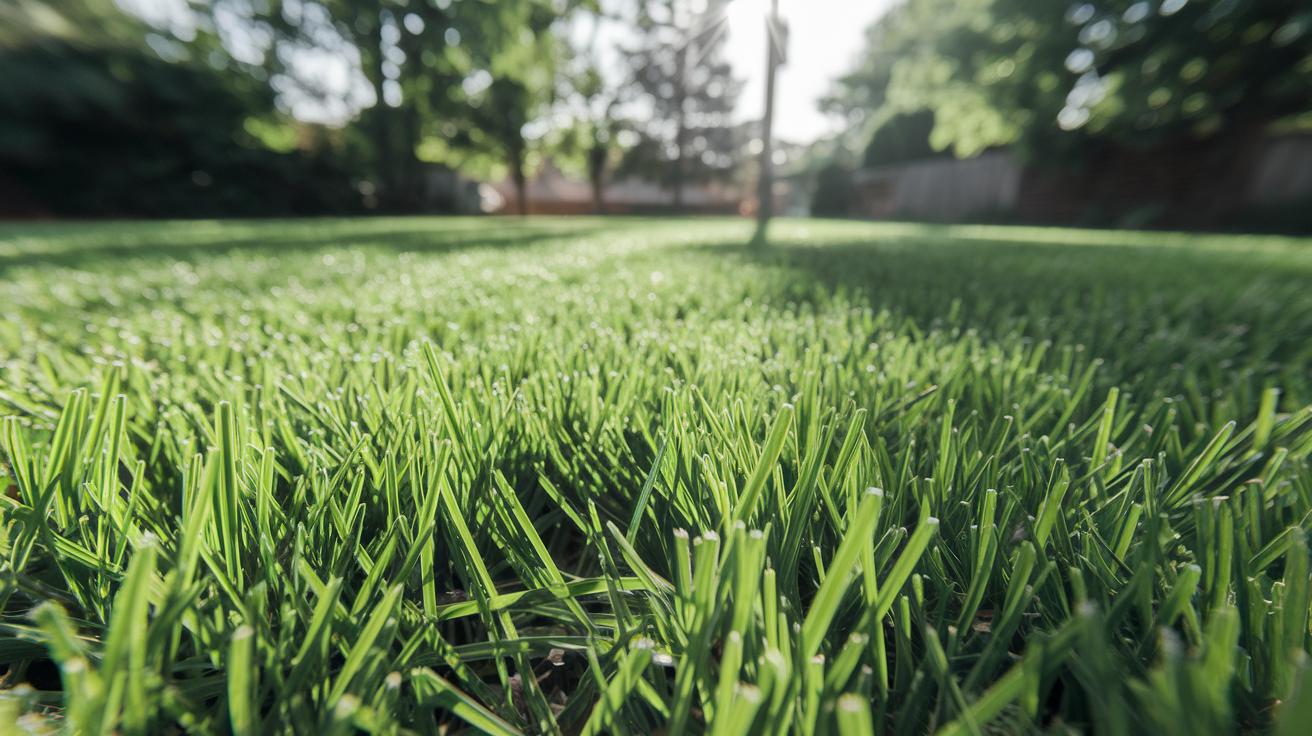
Aeration pokes small holes in soil to let fresh air swirl down, jump-starting soil respiration (when air moves through dirt). It gives tiny microbes and earthworms space to munch on thatch (a layer of dead grass). Have you ever spotted castings (worm droppings that boost soil health)? I still remember the surprise the first time I saw them pop up like hidden compost in my yard.
Those busy soil helpers break down garden debris, so you’ll dethatch way less often. And as they work, they unlock nutrients trapped underground. You can ease back on fertilizer applications, too. It’s like nature’s slow-release plant food – grass soaks it up without extra feeding, and your wallet stays happy.
A lively, well-aerated lawn fights off disease better because water moves around your grass roots instead of pooling on blades. You’ll notice fewer brown patches and less moldy buildup. By the way, my cat loves sunning on the freshly poked lawn. Thick grass also crowds out crabgrass and other weeds. There’s simply no room for them to sneak in.
Plus, air pockets in the soil hold tiny beads of water near the roots, so they drink deeply. By the way, my kid loves running across the bouncy, well-aerated lawn. You can trim back on sprinkling and save gallons each season. Wow, who knew a few holes could make such a big splash?
Best Timing: When to Aerate Your Lawn
Cool-season grasses like Kentucky bluegrass and tall fescue really do breathe better when you aerate (make tiny holes in the soil) in early fall. The air feels crisp and morning mist warms the earth. Then the grasses kick into root-building mode. You can sneak in a spring aeration before new shoots pop up, but fall gives those holes extra time to heal and fill in.
Warm-season grasses such as Zoysia and bermudagrass do best with aeration in late spring or early summer. That’s after they shake off winter dormancy (their rest period) and before the midday sun bakes the ground into a tough slab.
Aim for soil that’s damp but not muddy. The day after a good rain or a heavy watering is ideal. By the way, my pup always tests the fresh holes for digging. Your aerator won’t stall in dry, hard dirt and you won’t leave deep ruts in a soggy mess. Ever tried poking holes in rock-hard ground without a drop of water? Ouch, your tools will tell you why moisture matters.
How often should you aerate? It depends on your soil and how much foot traffic or pet play your yard sees. Sandy soil might only need aeration every two to three years. But yards full of kids and dogs need a little more care. Heavy clay soil (soil that holds water and feels sticky) usually benefits from aeration once a year or even twice. That way air, water, and nutrients slip down to thirsty roots all season long.
Aeration Methods and Equipment Explained
Aeration helps your lawn breathe. It makes small holes so air, water, and nutrients can reach grass roots. If soil feels rock hard, that’s compaction (soil packed tight).
Core aeration uses a hollow-tine machine (a tool with tube-shaped prongs) to pull out 2-4 inch plugs every 2-3 inches. It feels great to see those little plugs pop up. Core aeration is best for heavy clay or very packed soil.
Spike aeration pokes spikes into the ground. Just step in spike shoes or roll a simple machine over your yard. You’ll be done fast in sandy or loamy soil (soil with sand and clay).
Slice aeration cuts shallow, diagonal slits with a blade attachment. Seeds slip right into those cuts. It’s perfect before overseeding.
Liquid aeration uses enzyme spray (liquid that loosens soil). You mist it on the lawn and let it work. It’s slower but you don’t need to push heavy gear.
Renting a core aerator costs more up front but saves your back. Spike tools and shoes cost less and work fast on soft soil. Slice aeration helps grass seed reach earth. Liquid aeration is handy for small spots with mild compaction.
| Method | Equipment | Depth & Spacing | Best For |
|---|---|---|---|
| Core Aeration | Hollow-tine machine | 2-4″ plugs @ 2-3″ | Heavy compaction |
| Spike Aeration | Spike shoes or machine | 2-3″ holes | Sandy or loamy soil |
| Slice Aeration | Blade attachment | Diagonal slits | Overseeding prep |
| Liquid Aeration | Enzyme spray | N/A | Minor compaction |
How to Perform DIY Lawn Aeration

First, trim your grass a little shorter than usual and give it a good drink a day or two before you start. You want the soil to feel springy (nice and bouncy underfoot) but not too squishy or muddy. Test it by pushing a screwdriver into the ground, if it slides in with gentle pressure, you’re ready. This simple prep keeps your tools from getting stuck and stops big chunks of dirt from ripping up.
If you’re up for some hands-on work, grab a garden fork (a tool with long prongs). Stick those prongs 2 to 3 inches into the ground every 3 or 4 inches, like a checkerboard. Then rock the fork back and forth to break through hard-packed layers. You’ll feel each little soil plug pop free, pretty satisfying, actually! It’s perfect for small patches or edges where a machine can’t reach.
So when your yard needs a bigger boost, think about renting a walk-behind core aerator (a machine that pulls out plugs of soil). Expect to pay around $65 for four hours or $100 for a full day. If you’d rather save some cash, a manual plug aerator runs between $30 and $125, depending on how many prongs it has. Overlap each pass by about half so you don’t miss any spots and end up with even holes everywhere.
Once you’re done, just leave those little soil plugs right on the lawn. Over the next week or two, they’ll crumble and add fresh organic matter (decayed plant bits that enrich soil). Then sit back and watch your grass perk up, like tiny green fireworks popping up all over. By the way, I love sneaking a peek at sunset while those plugs settle. It feels like a mini celebration for your lawn.
Post-Aeration Care and Maintenance Tips
After aeration (when you poke tiny holes in the soil so air and water can reach the roots), you’ll want to keep things moist. Water your lawn every two to three days with a light soak. The goal is soil that feels like a damp sponge, not a puddle. This helps hair-like root tips slurp up moisture and keeps those fresh holes from drying out.
About a week in, sprinkle a slow-release best organic lawn fertilizer (food for grass that feeds slowly) across the yard. It’s like giving your grass a gentle snack without burning those tender tips. Then follow up with a quick drink of water to wash the nutrients down into the soil. Skipping this step can leave new blades thin and pale.
Wait two to four weeks for the plugs to crumble before overseeding. Then toss grass seed over any bare spots and gently press it into the slits. When green shoots appear, mow at about two to three inches so you don’t pull up the new roots.
Keep foot traffic light for roughly two weeks, no backyard soccer practice, okay? This gives tiny seedlings time to grow strong. Before you know it, you’ll have a bouncy, lush lawn ready for warm-weather fun.
Professional Aeration Services and Cost Estimates
Aeration is like giving your lawn a deep breath, you poke tiny holes so air, water, and nutrients sink right down to the roots. Have you ever felt the warm earth crumble between your fingers after a fresh punch? It’s pretty satisfying.
Most pros charge about $17 per 1,000 square feet. That usually adds up to $75–$204 for a full treatment, with an average close to $139. And yes, that price covers punching the soil and making room for your grass to grow.
A lot of companies, like TruGreen, bundle core aeration with fertilization and weed control. So you get hole punching, nutrient delivery, and weed management in one go. Some even toss in a quick soil test (checks pH) or an organic amendment (natural mix that boosts root health) to make sure everything’s balanced.
Hiring a pro saves you hours of sweaty work and guesswork over moisture levels, tine depth (those poking prongs), and proper hole spacing. Local experts know your region’s soil quirks and traffic patterns. They’ll dial in the right settings and cover every inch of your yard.
Cleanup is part of the deal too. You can let the plugs (little soil cores) crumble back into the turf or have them hauled off, your call. Compared to DIY, you get reliable depth, even hole spacing, follow-up support, and peace of mind that your whole lawn is in expert hands.
Final Words
You’ve jumped right into how lawn aeration works, why pricking turf fights crunch soil, and the signs your grass is gasping for air.
Next, we talked big perks, from deeper roots to less runoff, plus when to aerate, the best gear to use, and step-by-step DIY tips. Then we wrapped up with watering, feeding, and pros vs. home runs.
With solid know-how on what is lawn aeration, your yard’s ready to breathe easy and grow thick, green, and happy.
FAQ
What is lawn aeration used for and what does it do to a lawn?
Lawn aeration is used to make small holes that let air, water, and nutrients reach grass roots, relieves soil compaction, and helps produce thicker, greener turf.
When should you aerate and overseed your lawn?
You should aerate and overseed cool-season lawns in early fall or spring, and warm-season grasses in late spring. Pick a moist day after rain or light watering.
What tools or machines do I need for lawn aeration?
Manual aeration uses a garden fork or plug aerator. You can rent a gas-powered core aerator or pick up spike shoes and slice blades for light compaction.
How much does lawn aeration cost and why can it be pricey?
Lawn aeration costs about $75 to $204 for pros, or $65–$100 to rent a machine. Equipment upkeep, labor, and surface cleanup add to price.
How can I find lawn aeration service near me?
You can find local aeration services by searching online for lawn care providers, checking customer reviews, or asking neighbors who’ve used core aerators.
Is lawn aeration worth it?
Lawn aeration is worth it if you want thicker, greener grass. It cuts disease risk, boosts drought resistance, reduces fertilizer needs, and revives compacted soil.

